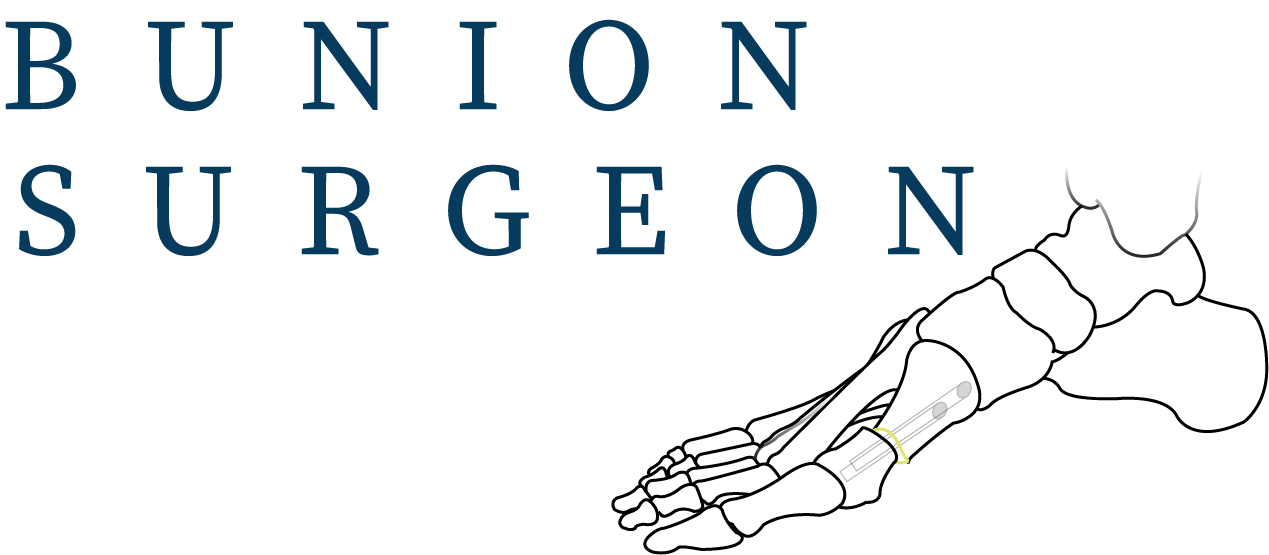

The Risks of Bunion Surgery
Date published: 2020-06-19
When more conservative treatments fail and symptoms become too painful, surgery is often a recommended final treatment option for Bunions. Surgery has the benefit of fully resolving the Bunion deformity and as such is currently the only way to settle all symptoms.
However, like all forms of surgery, a Bunion correction does carry some risk of complication. These complications arise in the minority of cases, but can still cause a good deal of apprehension for patients who are considering treatment with Bunion surgery. It is important that patients fully understand the implications of surgical Bunion correction, so they can make an informed decision as to whether they go ahead.
Below is some key information about the risks and complications associated with Bunion surgery.
Surgical Complications
Surgical complications are not common. The risks vary depending on the kind of operation that is performed. A surgeon will take several precautions before, during and after the operation to mitigate any risk of complication. In addition to this, many postoperative issues can be prevented if you are actively involved in your recovery and rehabilitation.
What are the Risks of Bunion Surgery?
Clots
Clots are possible with any surgery, requiring immobilisation. Fortunately, foot surgery carries a very low risk and modern bunion surgery techniques allow early mobilisation. Nevertheless, every patient is assessed for risk of developing DVT and this is mitigated through planned prophylaxis.
NonUnion of Bone/Delayed Healing
During a Bunion correction the bones are realigned into a normal position. Following this the bones need to heal in their new position, which can take between 6-8 weeks. When the bones fail to heal in their new position, this is called a ‘non-union’. This can be avoided by being in good health prior to the surgery, as well as maintaining stability during the postoperative phase to allow the bones to heal uninterrupted.
Pain in ball of foot
This is a rare complication where patients develop pain in the ball of the second toe following bunion surgery. With a carefully planned and executed bunion operation this is rare and will resolve over a few months. This complication is due to patients adapting to their new gait.
Pain in ball of foot
This is a rare complication where patients develop pain in the ball of the second toe following bunion surgery. With a carefully planned and executed bunion operation this is rare and will resolve over a few months. This complication is due to patients adapting to their new gait.
Further Foot Deformity
In some cases Bunions have been known to return or a new deformity may develop, such as hallux varus. This tends to be due to poor correction of the deformity, such that the bones and other tissues in the area are poorly balanced. Patients are always made aware of this possibility prior to surgery and will be able to identify these kind of issues early on. They can be resolved with splinting, and on occasion a revision surgery may be required.
Your Surgeon
In addition to the normal rate of risk and complication associated with Bunion correction, it is important to be aware of the success rate of your particular surgeon. Your surgeon should be able to provide information on their success rate, patient satisfaction, recurrence and other issues. These will vary from surgeon to surgeon, some favour particular surgical techniques or have particular areas of specialisation, so it is important to find the surgeon best able to help with your particular issues.
If you would like more information, or would like to schedule a consultation, contact our team on:
Tel: 0207 820 8007 | Email: admin@bunionsurgeon.co.uk | Address: 17 Harley Street, London, W1G 9QH